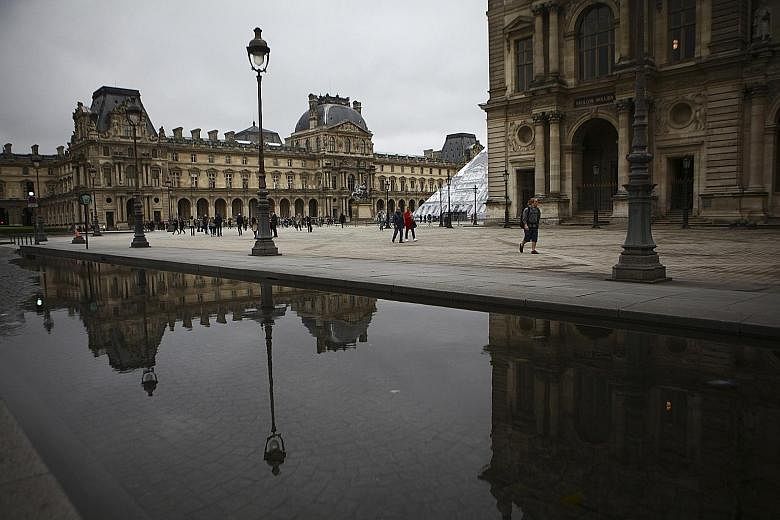PARIS • The square at the centre of the Louvre, dominated by I.M. Pei's glass pyramid, was desolate early last Friday morning, save for a few tourists taking selfies.
The museum was closed to visitors as Paris experienced its worst flooding since 1982. Inside, staff members and volunteers had worked around the clock to remove artworks from the threat of the rising waters of the Seine River.
I was part of a small group of journalists whom the French culture minister, Ms Audrey Azoulay; the museum's president, Mr Jean- Luc Martinez; and other officials took on a tour of the strangely vacant museum last Friday.
We were led through the Denon Wing, home of the Mona Lisa and usually the most crowded of the museum's three wings. Rooms packed with Renaissance and Baroque Italian masterpieces were ghostly. The Winged Victory Of Samothrace was bereft of its usual admirers.
In the galleries of Greek and Roman antiquities, the situation was more chaotic. Near the 2,200-year-old Venus de Milo, storage boxes were piled atop one another. Boxes encircled some sculptures, like one of a crouching Aphrodite from the 3rd century BC.
At the other end of the room, the goddess of wisdom, Athena, kept an eye on the metal drawers stacked to her side. The Hellenistic gallery had become just another storage room for treasures from elsewhere in the Louvre.
About 150,000 artworks in storage rooms and an additional 7,000 pieces in galleries were deemed vulnerable to flooding. Many were moved to higher floors starting on Thursday evening.
Museum officials activated a flood-protection plan established in 2002. The plan includes, among other things, an inventory of all works that would need to be transferred to upper floors and plans to slow the spread of any water entering the museum.
Although the Seine was expected to crest by last Friday evening at a height of about 6.1m and no water had entered the museum thus far, officials were taking no chances.
The works that were in storage were the easiest to handle.
"It took us less time than we thought because the artwork was already in containment boxes, so we just had to move them from one floor to an upper one," said Mr Adel Ziane, the museum's deputy director of communications.
The most painstaking work involved the removal of works from display cases.
Head curator of Islamic art Yannick Lintz at the Louvre, posted Twitter images of the display cases, emptied after a long night of work, and of the plastic storage crates where the objects were packaged. In some galleries, it looked as though a family was about to move in - or out. Boxes were subdivided by foam boards, creating spaces for vases and other precious objects. A seemingly abandoned ancient frieze sat on a wooden pallet on the floor of one gallery, half wrapped in plastic sheets.
"For the artwork which was exhibited and not in storage like for the department of Islamic art, we had to move the pieces from window displays," Mr Ziane said. "We have a team of exhibition-space managers who take care of handling the artwork and a team of curators who watch over everything."
For all its complexity, it was nothing like 1938 to 1939, when the museum was stripped of its masterpieces before the German invasion of France in 1940. Walls Of Louvre Blankly Stare While Treasures Rest In Vaults, a headline in the European edition of The New York Herald Tribune declared.
The museum was partly reopened during the German occupation, but without its top masterpieces, which were hidden across France. Nazi officials eventually discovered the locations of most, but decided to leave them in place.
The 2002 flood-protection plan, for all its detail, does not prioritise among works of art. How, in a palace of treasures, can one select the very best? "It is difficult to say which one is more valuable," Mr Ziane said. "They are all priceless and we decided the evacuation according to their risk of exposure."
NEW YORK TIMES

